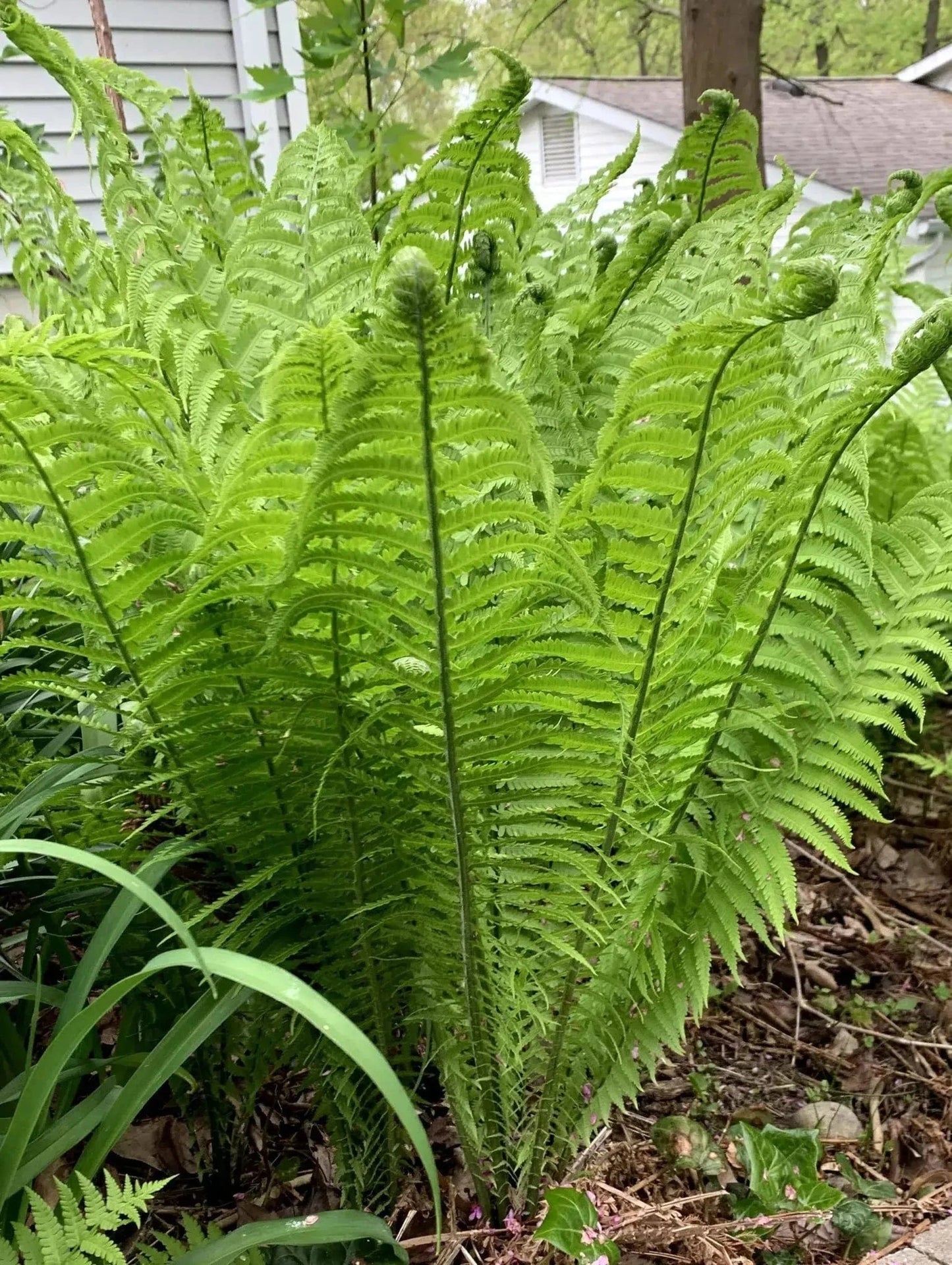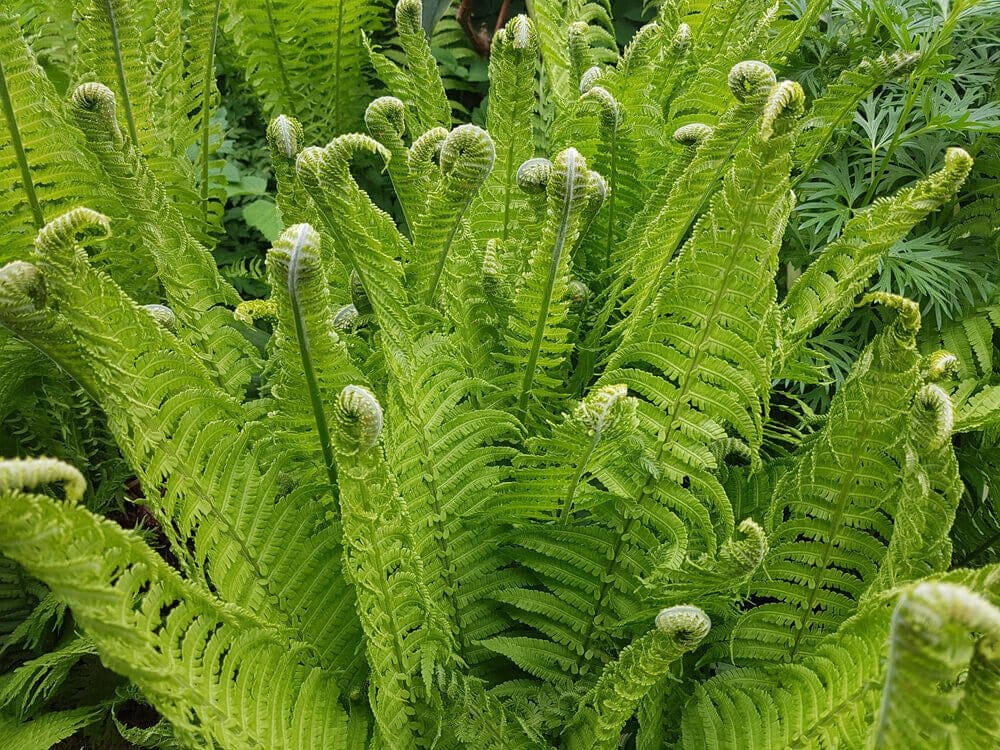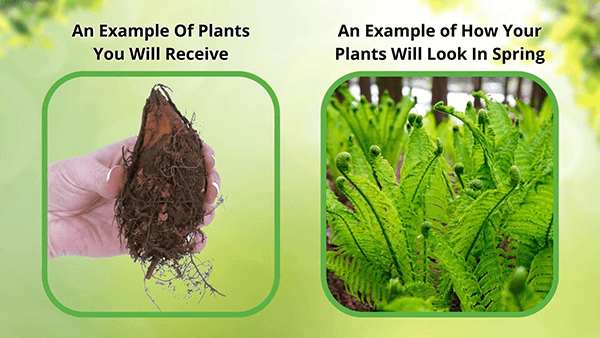Fiddlehead Fern
Fiddlehead Fern
Couldn't load pickup availability
Now
Fiddlehead Fern - Matteuccia Struthiopteris
Fiddlehead ferns are commonly eaten as a vegetable. They are so named because their tightly coiled fronds resemble the scroll. They are harvested in the spring before the fronds unfurl into full-sized leaves.
A Delicacy In Many Parts Of The World
They are a delicacy in many parts of the world, such as North America, Europe, and Asia. They are high in antioxidants, vitamins A and C, and minerals such as iron and potassium. They can be boiled, steamed, or sautéed and are often used in salads, soups, and stir-fry dishes.
Facts About The Fiddlehead Fern
- The fern is harvested when tightly coiled and immature before the fronds are fully open. At this stage, it resembles the head of a fiddle or violin.
- They have been consumed as a food source for thousands of years. Indigenous peoples in North America and Asia have traditionally harvested and eaten them as part of their diets.
- They are a good source of several essential nutrients, including vitamins A and C, potassium, and iron.
- They are high in antioxidants that help protect the body against disease and aging.
- While They are safe to eat when properly cooked, it is essential to avoid eating raw or undercooked, as they may contain toxins that can cause illness.
- They are popular in many Japanese, Korean, and Canadian cuisines.
- The fern is also used in traditional medicine to treat various ailments, including joint pain and digestive and respiratory problems.
- Ferns are often associated with the spring season, typically harvested during this time.
- These ferns are a seasonal delicacy and can be expensive due to their short harvesting window and labor-intensive process.
Anyone who's ever tried them can attest that they might be one of spring's best creations. Despite what some might think, they are not a specific species. Instead, they're the young offspring of several species, including the Ostrich, Western Sword, and Bracken ferns. The good news for many people who live in shady or semi-shaded areas is that these fern species prefer to live in the dark, damp, swampy areas where most plants wouldn't usually survive.
If you live in a place with such conditions, you can now have a tasty and beautiful garden in the least expected areas. Ferns derive their name from their appearance, resembling a violin's eloquent curled end.
They are also called "crozier" after their appearance, similar to a bishop's curved staff. The ferns are plucked early in the season when they're still curled and before the parent plant reaches its full height.
Fern Uses
In the United States, they are harvested and used for cooking in recreational and commercial kitchens. They are prized for their rich flavor and nutritional content, including high levels of essential fatty acids, omega-3 and omega-6.
Usage and Growth
Ferns are also high in fiber and iron. Recently, they've appeared as a gourmet delicacy on high-end restaurant menus. Ideally, the ferns are jade-green. They should not have started to uncoil before being picked and should not be brown.
They should also be smooth and free of fuzz, which can irritate the throat and create a choking hazard. People who enjoy these ferns will be glad to know that growing ferns is relatively easy.
Ferns do best in plant hardiness zones 3 through 7, as established by the U.S.D.A. Ferns will grow to a mature height of 3-6 feet. They'll have a ground cover of about the same width. They're a beautiful and elegant addition to any shaded garden and a quick and easy source of delicious natural food.
This Is How Your Plants Will Look upon Delivery
Shipping date depends on the date displayed and chosen when you order from the product's page.
We only accept returns on plants verified dead. If you think your plants have died, we offer a 1 year warranty, please use use this File a Claim Link to verify dead plants and start with return warranty process.




